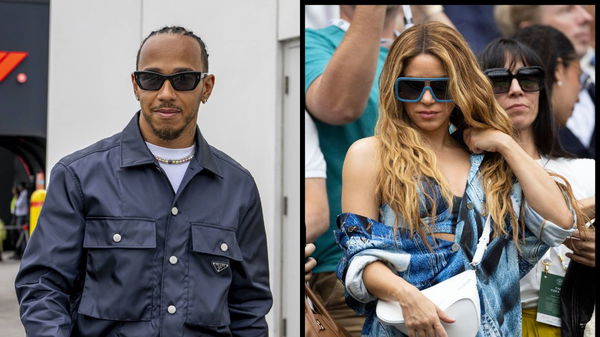Latest Brazilian Grand Prix News

Oliver Bearman’s ‘Smart’ Response to Esteban Ocon’s Extreme Racing Tactics Gets Appreciated by Ex-F1 Racer

F1’s 2024 Sprint Format Flipped 180 Degrees Along With Major Changes in DRS Usage

F1 News: Fernando Alonso’s Giant Impact on Lance Stroll’s Unexpected Success Gets Recognition From Boss Mike Krack

After 16 Years and Many Death Threats, Story of Lewis Hamilton’s Controversial 2008 Win Revealed by Timo Glock

Mercedes Face Conundrum as George Russell Gets Declared Unprepared to Compete With Lewis Hamilton


More Brazilian Grand Prix News
Fernando Alonso Claims Aston Martin Is ‘Breaking the Laws of Physics’ as His Career Comes Full Circle in 2023
After finishing what was a thrilling season with Aston Martin, Fernando Alonso sheds light on what made the AMR23 so special.

McLaren Destroys Red Bull by Joining the Likes of Lewis Hamilton With Special Guinness World Record
Lando Norris & Co. gained legendary status in Formula 1 by etching their name in the Guinness Book of World Records for their pitstop in Qatar.

Fernando Alonso & Lance Stroll’s ‘Unemotional’ Qualities Take Spotlight as Aston Martin Stages Comeback
Fernando Alonso and Lance Stroll get high praise from the Aston Martin camp as they prepare for a big showdown in the season finale.

Despite Taking Blame for Lewis Hamilton’s Miseries, Toto Wolff Given an Earful for Failed Promises
Toto Wolff faces the brunt of criticism for failing to deliver the promise to Lewis Hamilton despite taking blame for Mercedes' poor form.

Aston Martin Mastermind Lauds ‘Exceptional’ Lance Stroll for Taking the Fight to Fernando Alonso
After losing to his teammate by a landslide in 2023, Lance Stroll shows promise as the Brazilian GP favors the Canadian over Fernando Alonso!
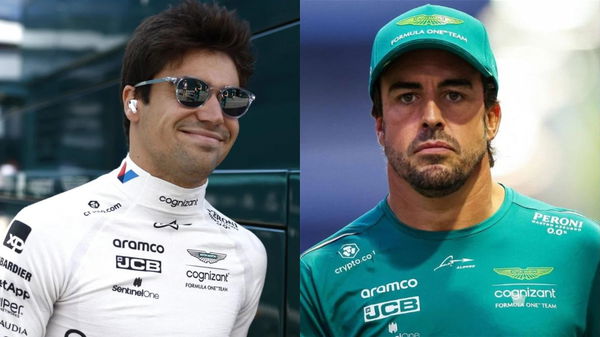
Fernando Alonso Prepares to Offload $1.7 Million McLaren Beast Years After Cutting Ties in Ugly Fashion
Years after cutting ties in ugly fashion, it seems like Fernando Alonso is ready to move on as he prepares to sell his McLaren beast
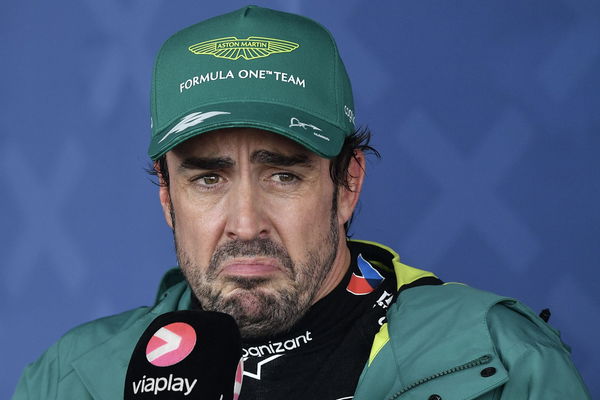
“It’s Mission Impossible”: Pierre Gasly Confirms Sergio Perez’s Inevitable Dead-End at Red Bull
Alpine driver, Pierre Gasly unfortunately confirms the inevitable dead-end at Red Bull for Sergio Perez. Find out what he said.

“No George No, This Is So Not Right” – George Russell Becomes the Internet Laughing Stock as Hilarious iPhone Incident Makes His Heart Stop
George Russell, during the driver's parade at the Brazilian Grand Prix, accidentally dropped his phone. His reaction became an instant meme.

“Not Enough Skill”: Sergio Perez Served Humble Pie as Fernando Alonso’s Heroics Continue to Haunt
Following the Brazilian GP, Sergio Perez is served with a humble pie as Fernando Alonso's heroics continues to haunt the Red Bull driver
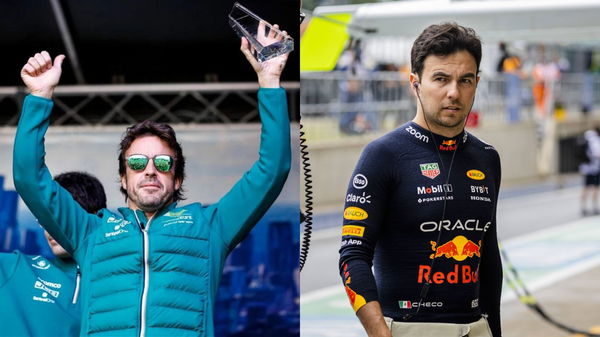
“Could Be Like Driving on Ice”: Christian Horner Highlights Bittersweet Nature of Las Vegas GP
Christian Horner highlights the bittersweet nature of the upcoming Las Vegas Grand Prix. Will Red Bull domination finally come to an end?

Ghosts From Mercedes’ Past Take the Blame as Lewis Hamilton Drops the Ball on Winning Opportunity
Lewis Hamilton has no one other than Mercedes to blame for his shocking Brazilian GP. But as it so happens, he also has the US GP to blame.
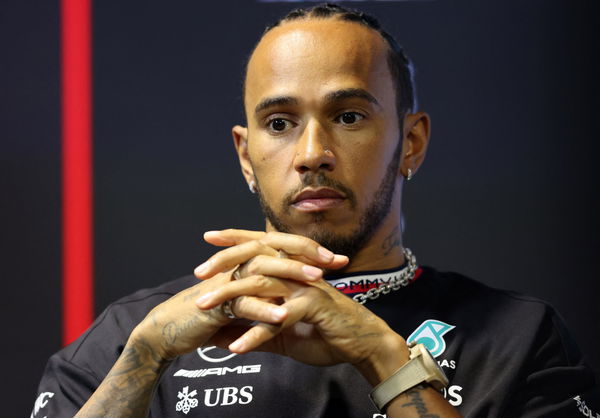
Lewis Hamilton & Co. Awaits End of an Era as Alarming Fallacies Tipped to End 11 y.o. Pristine Run
After a bad Brazilian GP, Lewis Hamilton and Mercedes awaits the end of an era as alarming fallacies tipped to end their 11 year old run.
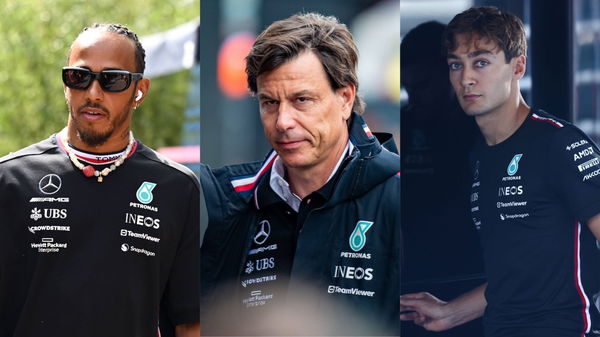
“Tear It Down & Get Outta Town”: F1’s Big Las Vegas GP Reveal Trashed by Fans
With just a week to go for 2023's penultimate race, F1 made a big Las Vegas Grand Prix reveal. Social media fans were quick to trash it.
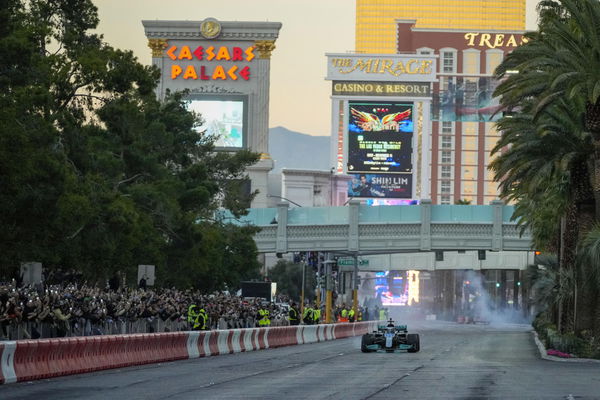
Daniel Ricciardo Lashes Out at FIA as Dubious Call Robs Him & Oscar Piastri of Shortlived Joy: “Use Common Sense”
The Brazilian GP start shattered the hopes of every Australian fan, but Daniel Ricciardo thinks the FIA should have done otherwise!

Silver Lining Highlighted for Lewis Hamilton as F1 Expert Contradicts Toto Wolff’s Pessimism
Amidst the recent pessimism from Toto Wolff, an F1 expert helps highlight a silver for Lewis Hamilton, following the Brazilian GP.
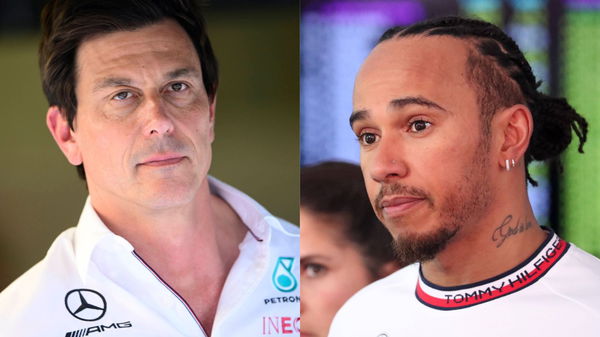
Lewis Hamilton Places His Father on Same Pedestal as Ayrton Senna in an Emotional Confession
Echoing his emotional connection with Ayrton Senna, Lewis Hamilton places his on the same pedestal as his racing icon in an emotional reveal.
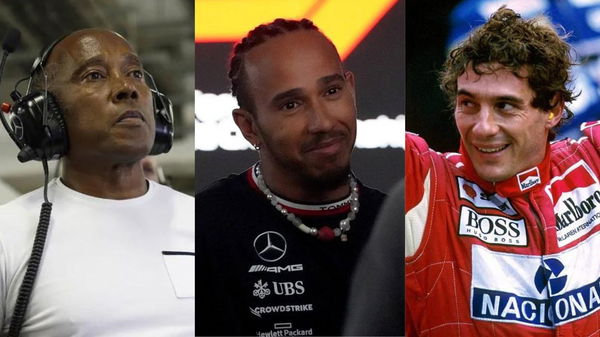
Oscar Piastri’s Rise From the Ashes Leaves Papaya Army Hailing “Underappreciated” Pit Crew
The Papaya Army hails the "underappreacitated" McLaren pit crews, amidst Oscar Piastri race finish at Brazilian GP
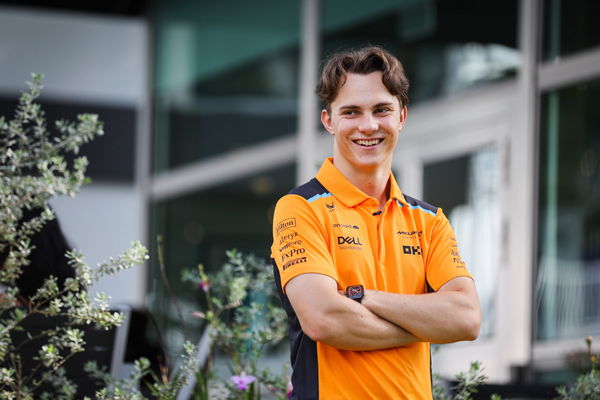
Christian Horner Ironically Mocks Sergio Perez While Lauding His “Mental Resilience”
Sergio Perez has been under immense pressure from Red Bull to perform, but Christian Horner set's aside qualifying woes to laud his race-craft
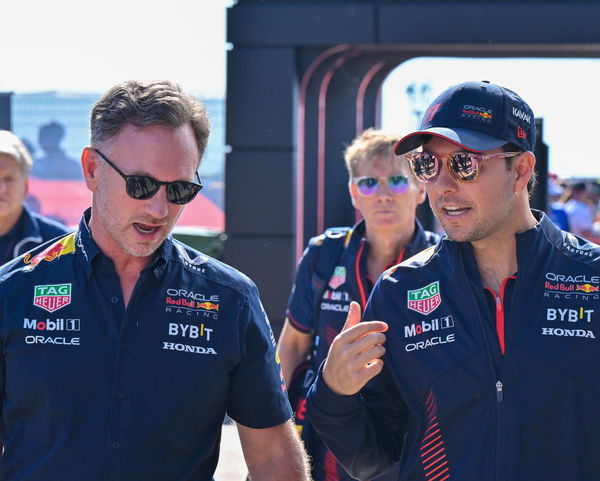
“Don’t Trust Them Anymore”: Amid Talks of Charles Leclerc’s $215 MN Contract, Ferrari’s Teaser Doesn’t Sit Well With Fans
Amidst recent talks of contract extension for Charles Leclerc, Ferrari's recent teaser doesn't sit well with the social media fans
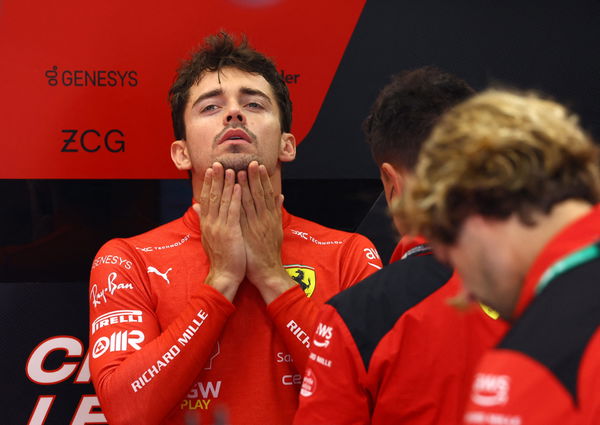
Mattia Binotto’s “Cursed Gift” to Frederic Vasseur Blamed for Charles Leclerc’s Brazilian GP Crash
Even though Mattia Binotto has left Ferrari, he's still blamed for stuff that happens to Charles Leclerc, like his mishap at the Brazilian GP.

“If You See Me Crying…”: Pierre Gasly’s Triumph Over Unexpected Handicap in Brazil GP Left Closest Ally Awestruck
Alpine's Pierre Gasly overcomes impaired vision to clinch P7 at the Brazilian GP, exemplifying true grit and racer's spirit.
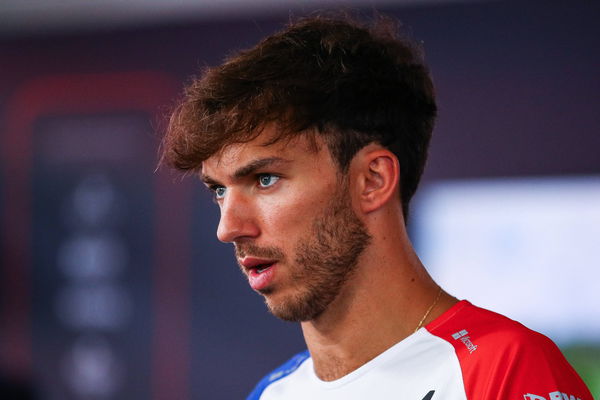
Lewis Hamilton Laughed at His Own Misery as Toto Wolff & Co. Left the 7X Champ Helpless in Brazil
Lewis Hamilton in hysteria after the harrowing and misreable Brazilian GP as Toto Wolff and Co. left the 7x champion helpless.

Toto Wolff Gets Shaken Back to Reality as Mercedes’ Turbulence Gives Upper Hand to McLaren
In a weekend to forget for Mercedes at the Brazilian GP, Toto Wolff & Co. received a reality check in the form of McLaren's success.

Ex-Ferrari Boss Rubbishes Toto Wolff’s Excuses to Lewis Hamilton by Highlighting Fernando Alonso & Co.’s Revival
Fernando Alonso excels in defensive driving at the Brazilian GP, overshadowing Mercedes' struggles as Wolff calls out their performance.
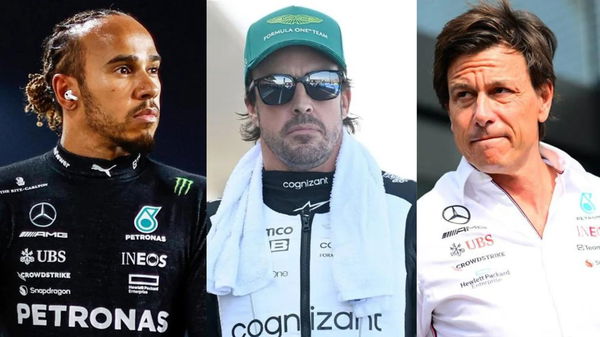
About Brazilian Grand Prix
Brazilian Grand Prix 2023 - Latest News, Winners, Qualifying, Circuits
Interlagos. The home of the Brazilian Grand Prix. A circuit where dreams have been lived. A circuit where dreams have died. A circuit that’s seen so much history over the years that it’s become an indispensable part of the Formula 1 calendar. After officially joining the calendar in 1973, Interlagos—or the Autódromo José Carlos Pace—has played host to the Brazilian GP every year except in 1978 and from 1981 to 1989.

via Reuters
Formula One F1 - Brazilian Grand Prix - Jose Carlos Pace Circuit, Sao Paulo, Brazil - November 14, 2021 Red Bull's Max Verstappen and Mercedes' Valtteri Bottas at the start of the race REUTERS/Ricardo Moraes
Over the years, it’s been the scene of the culmination of epic title fights, making it a race that everyone anticipated even more than usual. Well, that was until the Abu Dhabi GP joined the calendar in 2009. Since then—bar the three seasons of 2011, 2012, and 2013—the Brazilian GP has been the season's penultimate race. While everyone in the F1 community would love for it to return to its original calendar spot, this year will be even more different.
Scheduled from November 3rd to 5th, it’s Round 21 on the calendar. Instead of being the usual penultimate race of the season, it’s now the third-last race of 2023. Before 2023, the Brazilian GP usually featured a week or two after the US and Mexican GP. To accommodate a newly added Las Vegas GP, F1’s trip to Interlagos, Sao Paulo, has been preponed. Be that as it may, the circuit, in all its glory, is set to deliver like it always does.
There have been some truly memorable moments in Interlagos over the years. Home hero Ayrton Senna’s first win on home soil in 1991 would be almost every Brazilian fan’s highlight. To make the feat even more remarkable, he did it while stuck in sixth gear for more than 10 laps. Oh, and who can forget the title deciders that have happened here? In 2007, Kimi Raikkonen entered the race third in the championship behind McLaren’s Lewis Hamilton and Fernando Alonso. Out of all three contenders, Raikkonen was tipped to be the least likely to win. But against all odds, proving his Iceman-ness, he won the race and, with it, the championship.
“Is that Glock? Is that Glock going slowly?” A Martin Brindle commentary that will go down in history as something that’ll haunt Felipe Massa (until he claims the 2008 title, if he does, following his lawsuit against the FIA). The then-Ferrari driver crossed the line in P1, and for half a minute or so, he and his team were ecstatic. Hamilton needed anything better than a P6 to seal the title. Had it not been for Timo Glock struggling through the damo condition in slick tires, the title would’ve been Massa’s. But it was Hamilton’s day as he overtook Glock to take P5 and, ultimately, his maiden championship.
As thrilling as the title fights have been, so have the non-title fights. The 2021 Brazilian GP saw Hamilton make a comeback after receiving 25 places worth of penalties. He started the Sprint in P20 and finished fifth. He started the race in P10 and finished P1. It’s now the most special race of the honourary Brazilian’s career. A year later, his teammate George Russell got his first win at the circuit.
Last time out, in the ever-changing weather conditions in Sao Paulo, Haas’ Kevin Magnussen secured a shock pole position, setting a time of 1:11.674. Neither the Sprint nor the race worked in the Dane’s favor, though. Even so, it was a monumental achievement in a Haas car. Interlagos always springs up a surprise, and F1 2023 is ready for the exciting action that awaits in Brazil!
Most Winners
Back in the day, the FIA required a new venue to host a demonstration race as a quality check. The 1972 Brazilian GP was Interlagos’ inaugural race (although it wasn’t counted as part of the championship). In its official introduction in 1973, Brazilian Emerson Fittipaldi treated the crowd to a home victory. It then spent six glorious years on the calendar until 1981, when Jacarepaguá, Rio de Janeiro, became the race's home (as it did in 1978 as well). But F1 returned to Sao Paulo in 1990; since then, it hasn’t left the calendar.
Frenchman Alain Prost is the most successful driver to race in the Brazilian GP. Having amassed a staggering six Brazilian GP wins, he should ideally be the F1 king of Brazil. But considering five of his wins came at Jacarepaguá and the fact that Interlagos is the real home of the race, someone else pips him to the title.
The most successful driver in Interlagos is Michael Schumacher, who’s won at the circuit four times!
| Wins | Driver | Nationality | Years | Circuit(s) |
| 6 | Alain Prost | France | 1982, 1984, 1985, 1987, 1988, 1990 | Jacarepaguá Interlagos (1990) |
| 4 | Michael Schumacher | Germany | 1994, 1995, 2000, 2002 | Interlagos |
| 3 | Sebastian Vettel | Germany | 2010, 2013, 2017 | Interlagos |
| 3 | Lewis Hamilton | Great Britain | 2016, 2018, 2021 | Interlagos |
| 3* | Carlos Reutemann | Argentina | 1977, 1978, 1981, *(1972 - Non-Championship race) | Interlagos (1977) Jacarepaguá |
| 2 | Emerson Fittipaldi | Brazil | 1973, 1974 | Interlagos |
| 2 | Nelson Piquet | Brazil | 1983, 1986 | Jacarepaguá |
| 2 | Ayrton Senna | Brazil | 1991, 1993 | Interlagos |
| 2 | Felipe Massa | Brazil | 2006, 2008 | Interlagos |
| 2 | Mika Hakkinen | Finland | 1998, 1999 | Interlagos |
Past Constructors Winners
Alain Prost won the Brazilian GP with three teams—Renault (1982), Ferrari (1990), and the rest with McLaren. Apart from his four wins for McLaren, the British team has seen Ayrton Senna (2), Emerson Fittipaldi (1), Mika Hakkinen (2), David Coulthard (1), Juan Pablo Montoya (1), and Jenson Button (1) win. With 12 victories at the Brazilian GP, McLaren is the most successful constructor in the South American nation.
Adding to Prost’s singular win for Ferrari, Niki Lauda (1), Carlos Reuttemann (2), Nigel Mansell (1), Michael Schumacher (2), Felipe Massa (2), Kimi Raikkonen (1), and Sebastian Vettel (1) make Ferrari the second most successful in Brazil.
Since 2012, though, Mercedes has won the most Brazilian GPs—6 out of 10.
| Wins | Driver | Year(s) |
| 12 | McLaren | 1974, 1984, 1985, 1987, 1988, 1991, 1993, 1998, 1999, 2001, 2005, 2012 |
| 11 | Ferrari | 1976, 1977, 1978, 1989, 1990, 2000, 2002, 2006, 2007, 2008, 2017 |
| 6 | Mercedes | 2014, 2015, 2016, 2018, 2021, 2022 |
| Williams | 1981, 1986, 1992, 1996, 1997, 2004 | |
| 5 | Red Bull | 2009, 2010, 2011, 2013, 2019 |
Brazilian Grand Prix Circuit Details
What makes Autódromo José Carlos Pace one of the greatest circuits of all time? It’s one of the last remaining old-school tracks on the calendar. Made in the 1930s, Interlagos was constructed in undulating terrain on the outskirts of Sao Paulo. Situated between two reservoirs, that’s where the name comes from. As for its official name, José Carlos Pace was a Brazilian driver who won his only race at Interlagos. The circuit was named in his honor after tragically passing away in 1977 in a plane crash.
Coming back to why every driver and fan alike loves the circuit. Over the years, the circuit has had to evolve for safety reasons. Even so, it hasn’t lost its charm and character that everyone fell in love with before the big renovations. Initially, the track was almost 8 kilometers long, but after the safety reforms, when F1 shifted to Jacarepaguá for nine seasons, it was shortened to 4.3km (2.6 miles). Since 1990, when F1 returned to Interlagos, it’s stayed the same.
Before 1990, Interlagos was a clockwise track, a layout that drivers are more accustomed to. But after 1990, it became a counter-clockwise circuit, making the short circuit—where time to rest is almost nonexistent—even more challenging. As much as it is a challenge, it’s also a pleasure to drive. The pit straight has an upward incline that transitions into the iconic Senna S (Turns 1 and 2). The longest straight of the track (the Reta Oposta) is between Turns 3 and 4 (Descida do Lago). As a driver closes in to Turn 6, that’s where the trickiest part of the circuit starts. A series of slow-speed corners, Turns 6 and 7 lead into one the most difficult corners on the track—Turn 8 (Little Orange). The slow-speed section continues till the left-handed Turn 11, after which a short straight leads into a hard left. Turn 12 to 15 is usually done at full throttle, following which the trip through the dramatic elevation changes of Interlagos starts again.
To add to the dramatics of the track, the weather conditions are quite unpredictable. Through the years, the changing conditions have made for exciting sessions like qualifying in 2022, which saw Magnussen take pole. Back at the Singapore GP, when Verstappen qualified in P11, he said Marina Bay isn’t a track where overtaking is possible. He did say Spa-Francorchamps is a circuit where he could win from the back of the grid. Well, Interlagos is like that, too! Lewis Hamilton demonstrated how fighting through the field in 2021 is possible.

via Reuters
Formula One F1 - Brazilian Grand Prix - Jose Carlos Pace Circuit, Sao Paulo, Brazil - November 14, 2021 Mercedes' Lewis Hamilton celebrates winning the race REUTERS/Ricardo Moraes
The best place to watch the race? The Grandstand at the banked Turn 15 is a lovely place to watch cars go through the twisty second sector and accelerate through the final corners. The Grandstand at Turn 1 overlooks the Senna S—the best overtaking spot on the track. This year, just like 2021 and 2022, is also a Sprint weekend. The new format changes mean twice the qualifying sessions and twice the racing action. So, wherever you decide to tune in from or experience the electric atmosphere live, the Brazilian GP will be one to watch!
Where to watch?
In the US, all F1 races this season will be broadcast live on TV by ESPNews, ESPN2, ESPN+, or ABC.
If you’re tuning in from The Netherlands, hoping for a repeat of 2019 for Max Verstappen, Viaplay and Viaplay Xtra will stream all the live action. If you’re not one of the spectators and Intergalos and want to catch all the live action from the comfort of your home, Bandeirantes and Bandsports will keep you company. In the United Kingdom, Sky Sports and Channel 4 will keep you updated. Sky Sports’ Italian and German divisions, Sky Italia and Sky Deutschland, are in charge in Italy and Germany. France can catch all the action on Canal+, Austria on Servus TV, Africa on SuperSport, and Canada on RDS.
In India (and everywhere else), F1TV will provide all the live-action, analysis, and Tech Talks.
Brazilian Grand Prix Tickets
Tickets for the Brazilian GP are available on the Official Formula 1 website as well as on the F1 Experiences website. You can choose from a range of tickets, varying from Grounds Passes and Reserved Seats to Premium Hospitality.






